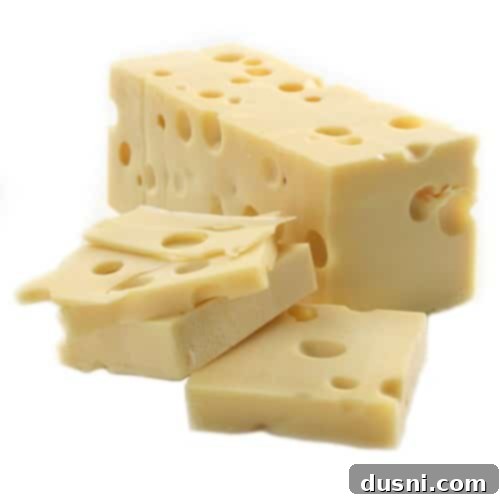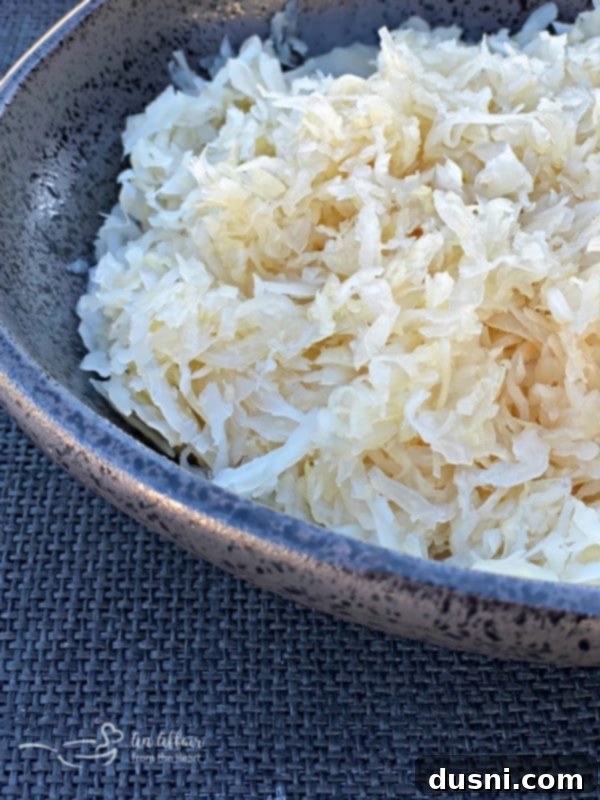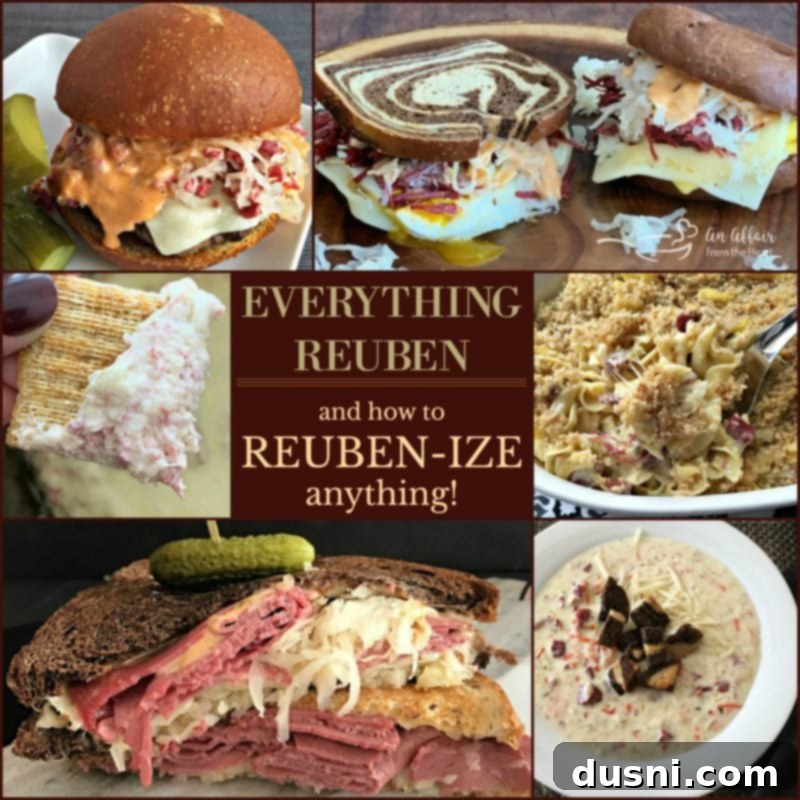Unraveling the Reuben: A Deep Dive into Its History, Classic Recipe, and Creative Twists
Like all truly legendary dishes and iconic superheroes, the Reuben sandwich boasts a captivating origin story. In fact, much like those larger-than-life figures, the Reuben actually has not one, but a couple of compelling tales explaining its creation. The truth, it seems, often depends on who’s telling the story.

Many assume this beloved sandwich originated in the bustling delis of New York City, perhaps in a traditional Kosher establishment. While that notion holds a kernel of truth, it’s worth noting that a true Reuben, combining meat and cheese, isn’t actually Kosher. As someone who calls Omaha home, I naturally gravitate towards and champion the version of the story that places its birthright firmly within my city limits. Besides, it simply makes for a more colorful and engaging narrative.
Regardless of its birthplace, the classic Reuben sandwich remains a masterpiece of culinary construction. It features generous slices of savory corned beef, a hearty pile of tangy sauerkraut, creamy Swiss cheese, and a generous slather of Thousand Island or Russian dressing, all expertly grilled between two slices of robust rye bread until golden and melted. This perfect combination of flavors and textures creates an unforgettable experience that has captivated diners for decades.

The Great Reuben Sandwich: A Tale of Two Cities
The lore surrounding the Reuben sandwich is as rich and layered as the sandwich itself. Let’s delve into the two primary origin stories that vie for authenticity, starting with the one favored by the Midwest.
The Omaha Origin: Reuben Kulakofsky and “The Committee”
In Omaha, Nebraska, the invention of the Reuben sandwich is celebrated with its own dedicated “Reuben Day.” This local tradition stems from the story that credits a Jewish Lithuanian-born grocer named Reuben Kulakofsky with its creation. According to this popular account, Reuben was a regular participant in a weekly poker game held at the prestigious Blackstone Hotel between the years of 1920 and 1935. This group of regulars affectionately referred to themselves as “The Committee.”
One evening, during a particularly long and intense poker session, Reuben Kulakofsky, feeling hungry, requested a sandwich made from corned beef and sauerkraut from the hotel kitchen. The chef, aware of the late hour and limited ingredients, improvised by adding Swiss cheese and Thousand Island dressing, then grilling it all between slices of rye bread. The resulting creation was an instant hit. The Committee loved the sandwich so much that they implored one of the other poker players, Charles Schimmel, who happened to be the hotel’s owner, to add this delightful new sandwich to the hotel’s lunch menu. And thus, a culinary legend was born, named in honor of its ingenious creator. One could say he was dealt a truly winning hand in the game of life, earning both a beloved sandwich and a commemorative day named after him. The rest, as they say, is delicious history, solidified in the hearts and menus of Omaha.
The New York Claim: Arnold Reuben’s Deli Legacy
Of course, across the country in New York City, another prominent figure named Reuben also lays claim to inventing a similar sandwich. Arnold Reuben, owner of Reuben’s Delicatessen, a famous establishment on Broadway, reportedly created the sandwich in 1914. His story suggests that he concocted it for an actress, Annette Seelos, who wandered into his deli late one night, proclaiming she was “so hungry I could eat a brick.” Reuben supposedly piled slices of ham, turkey, Swiss cheese, coleslaw, and Russian dressing onto rye bread, naming it after her. Over time, the ingredients supposedly evolved to the corned beef and sauerkraut we know today. This New York narrative is deeply ingrained in the popular imagination, leading many to believe that all Reubens hail from the iconic delis of the Big Apple. The debate between these two origin stories continues to this day, adding to the mystique and enduring appeal of the Reuben sandwich.
The Original and Still the Best: A Melting Pot of Flavors
Regardless of which origin story you choose to believe, one thing is certain: the Reuben sandwich emerged from a quintessential American love of hearty, satisfying sandwiches. Its genius lies in the harmonious blend of diverse flavors and textures, a culinary testament to the nation’s “melting pot” ethos.
Interestingly, while the sandwich itself is distinctly American, many of its core ingredients boast roots in cultures and cuisines from around the globe. The distinctive Swiss cheese, with its nutty notes and characteristic holes, hails from Switzerland. The dense, flavorful rye bread, a perfect foundation for such a robust sandwich, finds its origins in the bread-making traditions of Eastern Europe. Corned beef, a succulent, brined meat, represents an ancient method of preserving meat that has been practiced by cultures worldwide for millennia. And the tangy, crunchy sauerkraut? Its history is incredibly ancient, most likely originating with the Mongols or in ancient China, before finding its way to European tables.
Indeed, it’s precisely because the Reuben is such a wonderful fusion of culinary arts from various corners of the world that it stands as a truly unique and distinctly American sandwich! It embodies the spirit of bringing together the best of different traditions to create something entirely new and beloved.
What is Corned Beef? The Heart of the Reuben
At the very core of a classic Reuben sandwich lies succulent corned beef. But what exactly is corned beef? Simply put, it’s beef that has been cured or preserved in salt. The term “corned” comes from the large grains of rock salt, sometimes called “corns” of salt, that were traditionally used in the curing process. These granules are roughly equivalent in size to corn kernels. This brining process tenderizes the meat, imparts a distinct savory flavor, and gives it its characteristic pinkish hue.
Many people are most familiar with corned beef as a staple on St. Patrick’s Day menus. However, its association with this Irish holiday has more to do with the experiences of Irish immigrants in America than with ancient Irish traditions from the old country. Historically, much of the corned beef produced in Ireland from medieval times onward was actually exported elsewhere. When Irish immigrants arrived in America, they found beef to be more affordable and readily available than the pork that was common in their homeland. They adapted their traditional cooking methods to this new, cheaper protein, and corned beef became a popular and comforting dish for these newcomers, eventually becoming synonymous with Irish-American celebrations.
It’s also common for people to confuse corned beef with pastrami, as the two are quite similar in appearance and application. Both are cured meats, but pastrami undergoes an additional smoking process. While corned beef is brined and typically boiled or steamed, pastrami is usually brined, seasoned with a robust spice rub (often including coriander, black pepper, and garlic), and then smoked. In essence, pastrami is often described as “cow bacon” because it typically comes from the navel or brisket cut, similar to how bacon comes from pork belly, and is salted and smoked in a comparable fashion to pork bacon. This smoking imparts a distinct, deeper flavor profile.
That being said, there’s absolutely no reason you can’t experiment and use pastrami instead of corned beef for a Reuben. While the price might be steeper due to the extra processing, the smokier flavor of pastrami adds another fantastic dimension to the sandwich, creating what some call a “Rachel” sandwich variation.
Sauerkraut with Corned Beef: A Fermented Love Story
Just as corned beef relies on an ancient method of meat preservation from the days before refrigeration, sauerkraut, too, has a long and storied history as a staple of fermented foods. Sauerkraut is essentially finely shredded cabbage that has been fermented in a salty brine. This fermentation process not only preserves the cabbage but also develops its distinctive tangy flavor and creates beneficial probiotics. There are many regional variations of sauerkraut, each with its own unique characteristics. For an even deeper dive into this fascinating ingredient, be sure to check out my Ultimate Guide to Sauerkraut article for more information!
The pairing of sauerkraut, or “kraut” for short, with corned beef is nothing short of culinary magic. When you consider how far back these foods go – literally thousands of years – their synergy makes perfect sense. They have evolved alongside human cuisine, becoming a classic duo. The sharp, lactic tang of the sauerkraut provides a vital counterpoint to the rich, salty flavors of the corned beef, cutting through its fattiness and adding a refreshing crunch that elevates the entire sandwich experience. You could almost say that at this point, enjoying them together is embedded in our culinary DNA.

Putting on the Swiss: Choosing the Best Cheeses for Your Reuben Recipes
No Reuben sandwich is complete without a generous layer of perfectly melted Swiss cheese draped over the warm corned beef and sauerkraut. While “Swiss cheese” is a broad category, knowing which types work best can truly elevate your Reuben experience.
When selecting your cheese, look for more aged styles that offer a deeper flavor profile and excellent melting properties. The most popular and iconic type associated with the term “Swiss cheese” is actually Emmental cheese. Emmental is renowned for its characteristic large holes (known as “eyes”) and its firm yet supple texture. It melts beautifully, creating a creamy, gooey layer that binds the sandwich together. Its flavor is mild, nutty, and slightly fruity, providing a delightful contrast to the more assertive flavors of the corned beef and sauerkraut.
The subtle tanginess of Swiss Emmental-style cheese plays exceptionally well with the briny flavors of the corned beef and the sour kick of the sauerkraut. These ingredients truly bring out the best in each other, creating a balanced and complex flavor profile. People who might typically find Swiss cheese too tangy, sauerkraut too sour, or corned beef too salty often discover that within the harmony of a Reuben, all these elements become non-issues, perfectly melding into a singular, irresistible taste. Other excellent melting cheeses like Gruyère or Jarlsberg can also be used if Emmental isn’t available, offering similar nutty notes and creamy textures that complement the Reuben’s profile.
Delicious Variations on the Classic Reuben
While the classic Reuben sandwich justly captures the most attention and adoration, its enduring appeal has inspired a dazzling array of variations. The beauty of the Reuben lies in its adaptable flavor profile, allowing for countless creative interpretations that extend far beyond the traditional beef. In fact, not all of these delicious twists even involve beef!
Seafood lovers can rejoice, as there are fantastic Reuben variations made with fish. A grouper version, featuring flaky white fish instead of corned beef, is particularly popular in coastal regions like Florida. Similarly, a walleye Reuben can be found on menus in the Midwest, notably in states like Minnesota and Ohio, offering a lighter yet equally flavorful alternative.
For those who appreciate a smoky kick, the Montreal version of the Reuben substitutes classic corned beef with rich, flavorful Montreal-style smoked beef, often spiced with black pepper and coriander, offering a unique regional twist.
Another well-known variation is affectionately called a “Rachel.” This delightful sandwich is typically made with pastrami or turkey, and swaps the sauerkraut for creamy coleslaw, providing a different texture and a milder, sweeter tang than its traditional counterpart.
Beyond sandwiches, the Reuben’s distinct flavor profile has been incorporated into numerous other dishes. You can find creative applications like Reuben egg rolls, crispy wonton purses, and even vibrant salads that capture the essence of the original.
For those with dietary restrictions, there’s even a delicious vegetarian version! Instead of meat, this plant-based Reuben stacks flavorful veggies like marinated cucumbers or roasted mushrooms with sauerkraut, Swiss cheese (or a vegan alternative), and dressing on rye bread. Vegans can take it a step further by utilizing soy-based or nut-based “cheese” products that melt beautifully, ensuring everyone can enjoy a taste of the Reuben’s magic.
Needless to say, the classic Reuben sandwich has inspired a multitude of delicious variations, proving its versatility and universal appeal across different palates and preferences!
Thousand Island vs. Russian Dressing on a Reuben: The Great Debate
One of the most spirited debates surrounding the Reuben sandwich revolves around its essential condiment: Thousand Island or Russian dressing. “They” say this sandwich is traditionally served with Russian Dressing, but I’m not entirely sure who “they” are, because in my culinary world, it has always been made with Thousand Island dressing.
While the two dressings are indeed similar in their creamy, reddish appearance and tang, they offer distinct flavor profiles, and either one generously slathered onto the rye bread will undoubtedly be delicious on a Reuben sandwich.
Russian dressing, which ironically isn’t Russian at all, is surprisingly easy to make from scratch, though it’s also readily available in bottles at most grocery stores. To whip up a homemade Russian-style dressing, you typically need a base of mayonnaise, combined with ketchup, relish, and a hint of spice, often from horseradish, Worcestershire sauce, or even a touch of sriracha for a modern kick. Blend these ingredients together, and you have a savory, slightly piquant dressing that adds depth to the Reuben. The funny part? If you were to ask someone from Russia what they would call this condiment, they’d likely refer to it as “ketchunnaise,” a simple portmanteau of its main components.
As I mentioned, my personal preference, and the tradition in my kitchen, has always been to use Thousand Island dressing for all things Reuben. I find its sweetness, combined with its unique flavor, to be incredibly appealing. Thousand Island dressing also starts with a base of mayonnaise and ketchup, but it differentiates itself with the inclusion of finely chopped hard-boiled eggs, sweet pickle relish (or chopped pickles), and sometimes a touch of onion, pimento, or other seasonings, resulting in a slightly chunkier texture and a sweeter, milder taste profile than Russian dressing. While store-bought versions are convenient in a pinch, making your own Homemade Thousand Island Dressing is remarkably simple and tastes so much better, allowing you to control the freshness and balance of flavors. Ultimately, the choice between these two classic dressings boils down to personal taste, but both contribute essential character to the iconic Reuben.
Rocking the Rye: The Indispensable Bread
While all the components of a Reuben are crucial, the distinctive flavor and texture of rye bread elevate a good Reuben into something truly fabulous. The unique herbal and savory elements that rye bread contributes, often enhanced by caraway seeds, cannot be underestimated. It’s not just a vehicle for the fillings; it’s an integral part of the sandwich’s identity.
Rye bread for Reuben sandwiches can vary in color, ranging from lighter marbled versions to darker, more robust pumpernickel styles. More critical than the color, however, is the bread’s texture. It should ideally be quite dense and firm. This density is paramount because it allows the bread to stand up robustly to the juiciness of the tender corned beef and the moisture of the sauerkraut or coleslaw without becoming soggy. A thinner, less substantial bread would simply crumble under the weight and moisture of the fillings. Grilling or toasting the rye bread further enhances its structure, creates a satisfying crispness, and deepens its already complex flavor profile, making it the perfect foundation for this iconic sandwich.
Let’s Reubenize! Endless Culinary Inspiration
My profound love for the Reuben sandwich has inspired countless recipe ideas and innovative ways to incorporate its iconic flavors into other dishes you might never have dreamed possible. That, my friends, is precisely what I’ve dubbed “Reubenizing.” I am actively petitioning for it to become a recognized dictionary term, so please, feel free to join me in this delightful culinary crusade!
I’ve developed so many “Reubenized” recipes over the years, and I’m always adding new creations to the collection. So, make sure to visit often to discover the latest inspirations. Now, let’s dive into some of these fantastic recipes!
Traditional and Not-So-Traditional Reuben Sandwiches:
- Traditional Reuben Sandwich – Of course, I’ve included a comprehensive recipe for creating the original, classic Reuben sandwich, just the way it was meant to be enjoyed.
- Brats Reuben Style – Bringing up brats doesn’t have to mean what you think it means! In this delectable recipe, I put a unique and flavorful spin on classic brats, infusing them with that undeniable Reuben essence.
- Reuben Burger – Stack it high and prepare for an explosion of flavor! This burger is incredibly juicy and delicious. Just be careful, you might end up wearing half of it if you’re not mindful – it’s that good.
- Reuben Breakfast Sandwiches – Why limit the Reuben to lunch or dinner? By adding eggs and experimenting with different types of rye bread, muffins, or bagels, you can create an awesome egg Reuben that’s perfect for breakfast or a hearty brunch.
Speaking of breakfast and brunch, who doesn’t love a good quiche? They say real men don’t eat quiche, but that must have been before my husband tried my Reuben Quiche. I can personally confirm that real men absolutely LOVE Reuben quiche!
Reuben-Inspired Appetizers:
- Fabulous Reuben Cheese Ball – Reimagine the classic sandwich as an elegant, ready-to-serve appetizer cheese ball, perfect for your next party or charcuterie plate.
- Crock Pot Reuben Dip – While we’re on the subject of delectable appetizers, this warm and creamy dip for crackers tastes absolutely incredible. Serve it with rye crackers to truly bring the entire Reuben flavor profile together in every bite.
- Reuben Totchos – Take the beloved Reuben and reinvent it as nachos, but with a fun twist – made with crispy tater tots! Is your head spinning with excitement yet?
- Reuben Pinwheels – These elegant and flavorful pinwheels, made with flaky puff pastry, are a fantastic and easy-to-make appetizer that disappears quickly at any gathering.
- Hot Reuben Dip – A cheesy, baked dip that captures all the warm, savory goodness of the sandwich when spread generously on toasted rye points.
- Reuben Wonton Purses – Delightful little wonton wrappers filled with that irresistible combination of corned beef, Swiss, and sauerkraut, then baked to golden perfection.
Main Course Reubenized Meals:
- Cream of Reuben Soup – This rich, hearty, and incredibly comforting soup is destined to become your new favorite rainy day or chilly evening meal. It’s truly a bowl of Reuben bliss.
- Reuben Casserole – If you can create a delightful Reuben-style quiche, then of course a Reuben casserole is not only possible but absolutely glorious! It’s a fantastic way to feed a crowd.
- Another Kind of ‘Za: Reuben Pizza – Just when you thought I might be running out of brilliant ways to reimagine the Reuben, I take two of the best comfort foods on Earth – the Reuben and pizza – and ingeniously combine them into one irresistible dish.
- Hot Potatoes: Reuben Stuffed Baked Potatoes – You can only do bacon and sour cream stuffed potatoes so many times before you start thinking outside the box. These Reuben-stuffed baked potatoes are an exciting and incredibly satisfying alternative!
I sincerely hope you’re inspired to “Reubenize” some recipes in your own kitchen! Try some of mine to get started, then please, share if you come up with some incredible creations yourself. I am always on the lookout for new and exciting ways to enjoy the infamous, beloved Reuben! 



